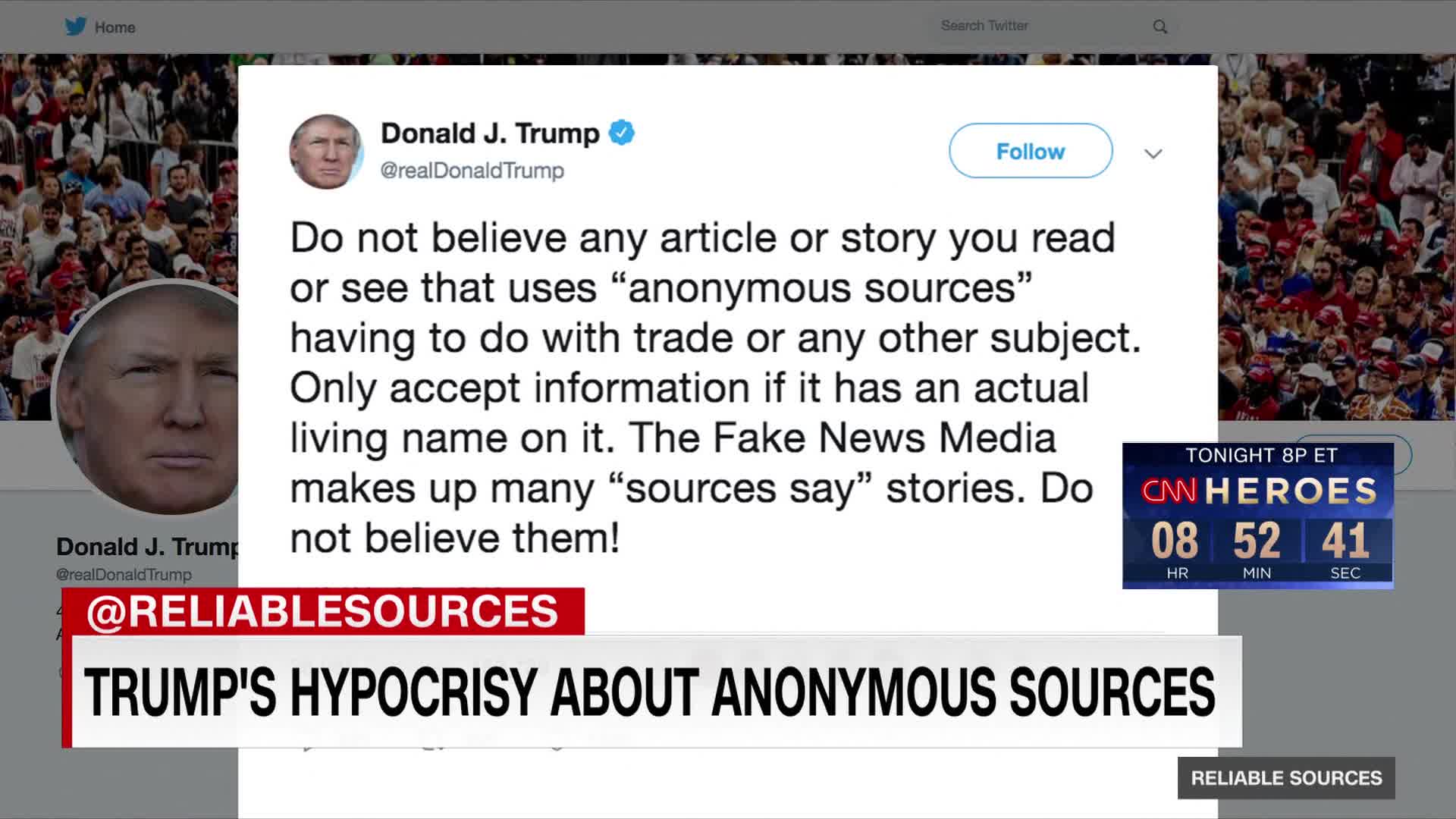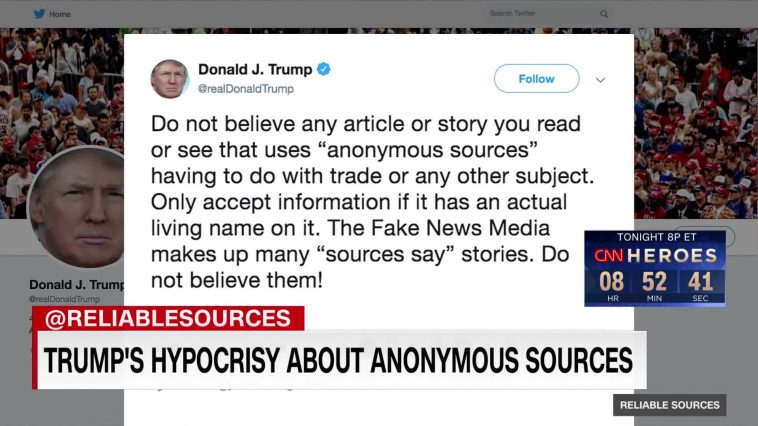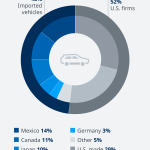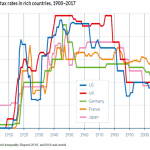
Corporate Praise Versus Hard-Nosed SEC Disclosures: A Closer Look at the Business & Political Divide
The world of high finance and corporate strategy is full of tricky parts and tangled issues, where the public messages of CEOs often paint a very different picture from the nitty-gritty details disclosed in regulatory filings. Recent events surrounding Nvidia CEO Jensen Huang and his public praises for President Donald Trump are a case in point. On the surface, Huang celebrates Trump’s bold leadership and visionary approach to economic growth, even lauding the president as a key, almost unmatched advantage for America. However, a closer look at Nvidia’s latest Securities and Exchange Commission (SEC) filings reveals some hidden complexities—tangled issues that demonstrate how past public commendations and formal disclosures diverge in significant ways.
This opinion editorial takes a deeper dive into the contrasting narratives offered by business leaders in public interviews versus the more sober, factual tone required in official regulatory filings. We will dig into the role of tariffs, export restrictions, and trade policies, while also exploring the broader currents of corporate strategy under an administration known for his off-putting approach to economic governance. With a focus on the challenges facing today’s business leaders, the discussion underscores the delicate balancing act between public relations and investor transparency in a politically charged environment.
Understanding the Dual Messaging in Corporate Communications
Public remarks made by high-profile industrial titans like Jensen Huang often serve multiple functions. They are aimed at reassuring shareholders, swaying public opinion, and maintaining governmental good will. Huang’s remarks—that President Trump is a “bold visionary” who offers an unprecedented advantage to American business—sound inspiring and paint a picture of synergy between corporate growth and political leadership. Yet, when we poke around Nvidia’s official quarterly filing with the SEC, we uncover a very different mood—a candid accounting of the challenges posed by tariffs and other government-imposed roadblocks.
This divergence points to a broader trend in today’s corporate communications. On one hand, CEOs speak in broad, optimistic strokes during interviews, emphasizing opportunity and national strength. On the other hand, in the more formal confines of SEC submissions, companies are legally required to detail the specific risks—including the intimidating impacts of tariffs and regulatory uncertainties. This split narrative raises critical questions about how well corporate leaders manage their public persona versus their responsibility to provide investors with a thorough, unvarnished view of business risks.
Comparing Public Praise and Hard Data
Analyzing this split messaging reveals several subtle details worth noting:
- Public Statements: Often designed to boost market confidence, these statements might gloss over the nerve-racking challenges or downplay the complicated pieces of government policies.
- SEC Filings: Here, companies are compelled to address every twist and turn—listing tariffs multiple times as a tangible risk factor that could hinder revenue.
The discrepancy between the optimistic public quotes and the more stark and candid details in filings is not unique to Nvidia. Other major corporations such as Ford and Harley Davidson have also faced a similar balancing act. Ford’s CEO, for example, touted tariffs as a chance to “gain some business” even as later filings revealed a staggering $1.5 billion hit, while Harley Davidson flagged potential losses ranging between $130 million to $175 million. These examples point to a larger, more complicated puzzle confronting the business community: how to say one thing to the broader public and another to investors.
Tariffs and Trade Policies: A Double-Edged Sword for Corporations
Tariffs and export controls remain among the most significant factors contributing to the challenging business environment that many companies face today. While the rhetoric from corporate titans and political leaders might offer a smooth-edged narrative of inevitable American triumph, the fine points outlined in official documents tell a story loaded with problems and full of issues.
The Impact of Tariffs on Revenue and Business Strategy
Companies are increasingly operating under conditions shaped by tariffs, which often act as a double-edged sword:
- Export Challenges: For instance, Nvidia disclosed that a new round of export restrictions affecting AI chip sales to China led to a massive $5.5 billion hit. Such regulatory limits can create nerve-racking uncertainty, particularly for firms with global ambitions.
- Domestic Cost Pressures: Tariffs are consistently highlighted in SEC filings, with companies citing them as a significant risk factor. Nvidia’s own filings mentioned tariffs seven times, reflecting an environment where trade policies pose real and calculable obstacles.
This conservative depiction of tariffs in regulatory filings contrasts starkly with more relaxed public comments, where the same policies are sometimes depicted as opportunities or minor setbacks. The real challenge for investors is to parse these mixed messages and determine the underlying financial realities. Clearly, a company’s market value and growth potential depend on its ability to manage these tricky parts—balancing ambition in public statements with investor assurances in official documentation.
Understanding Export Controls and Global Market Impact
Export controls, especially those targeting technological products like advanced AI chips, add another layer of complexity to corporate strategy. With rules crafted to curb the transfer of critical technologies, these restrictions can create an intimidating environment for companies trying to expand their footprint internationally. Nvidia’s experience is instructive:
- The company was compelled to lobby for a change in export policy after facing steep limitations that primarily affected its ability to compete with Chinese rivals like Huawei.
- The successful lobbying prompted a policy reversal, demonstrating how corporate influence can alter the playing field, though only after incurring significant strategic costs.
This example underscores a reality frequently faced by industrial manufacturers and technology companies alike: the need to steer through an ever-changing regulatory landscape, where positive public messaging may not fully capture the real, worrying details in the filings. As companies expand into regions such as Italy, Spain, and the United Arab Emirates, the potential for discrepancies between public narrative and official filings remains a concern that investors must take into consideration.
Corporate Strategies in a Politically Charged Environment
The current political climate under President Trump has created a scenario where business tactics are increasingly intertwined with governmental actions. The administration’s approach to tariffs is a case in point, reflecting the hidden complexities and subtle distinctions that companies must deal with on a daily basis.
Lobbying and Political Influence: Benefits and Broader Implications
While many corporate leaders are quick to tout their “Made in America” credentials, there is a growing trend among executives to invest in high-level diplomacy with the government. Jensen Huang’s reported lobbying to restart chip exports to China highlights an essential fact: business leaders often feel compelled to state one thing in public while working behind the scenes to mitigate risks and burst through policy limitations. The benefits of such an approach include:
- Policy Reversal and Flexibility: As seen in Nvidia’s case, active lobbying led to a policy change that ultimately benefited the company, even though it came only after a period of significant financial disruption.
- Strengthened International Competitiveness: High-profile communications combined with behind-the-scenes action can help companies maintain and expand their market share globally.
However, this dual approach also raises broader questions about transparency and accountability. By praising policies in public—even when internal filings reflect a more tense and realistic view—corporate leaders risk creating a disconnect with investors. The subtle detail here is that while such high-level maneuvering might yield short-term gains, the long-term credibility of business leaders depends on consistent and transparent communications across all platforms.
Balancing Public Perception and Investor Confidence
Ensuring that both public praise and investor communications align is key to sustaining long-term trust in the marketplace. Business leaders must figure a path that reconciles the sometimes overwhelming public relations challenges with the super important responsibility of laying out a clear financial picture for investors. This balancing act includes:
- Consistent Messaging: Clearly communicating both achievements and challenges can help soothe investor nerves and create a more stable market environment.
- Strategic Transparency: Companies need to maintain a transparent approach in filings by addressing every twist and turn—from tariffs to export restrictions—so that investors have a realistic view of potential risks.
- Political Engagement: While engaging with the government remains crucial, the messaging in public appearances should ideally mirror the more detailed accounts provided in official documents.
For many business leaders, managing these subtle details—the fine shades between public relations and investor communication—is not just a regulatory requirement but a key part of building long-term credibility. The challenge lies in crafting messages that are both inspiring and factual, avoiding the nerve-racking gap between public accolades and the reality of a company’s balance sheet.
Case Studies: Ford, Harley Davidson, and Nvidia
Examining real-world examples from other major companies helps shed light on how widespread these issues are:
Ford’s Battle with Tariff-Related Challenges
Ford’s experience during the early phase of the global trade war illustrates the double-edged sword of political rhetoric versus financial reality. When CEO Jim Farley appeared on Fox News, he spoke optimistically about the potential business opportunities created by tariffs. However, not long after these public statements, Ford’s SEC filings disclosed a staggering $1.5 billion decline in revenue directly attributed to these tariffs. The following table summarizes the contrasting narratives:
| Aspect | Public Statement | SEC Filing |
|---|---|---|
| Tariff Impact | Opportunity for Business Growth | $1.5 Billion Revenue Hit |
| Risk Portrayal | Minimal Concern | Listed as a Major Risk Factor |
This example clearly shows that while public figures may highlight potential benefits and downplay the intimidating risks, the official filings tell a narrative that is full of problems and loaded with issues requiring serious attention from investors.
Harley Davidson’s Cautionary Tale
Harley Davidson’s story further amplifies the contrast between public confidence and formal risk disclosure. Once an outspoken critic of tariffs, the iconic motorcycle manufacturer had to reveal to regulators that the new tariffs could cost it between $130 million and $175 million in just one year. This move was a stark reminder that even companies known for their rugged public personas must face the nerve-racking realities documented in SEC filings. The narrative for Harley Davidson is one that illustrates how downplaying the potential financial impact in public forums can be a risky strategy when the fine details eventually emerge in financial disclosures.
Nvidia and the Global AI Market Dilemma
Nvidia’s situation is perhaps the most illustrative when it comes to understanding the dual messaging in corporate communications. While CEO Jensen Huang publicly praised the president for his bold leadership and high-level vision, the official filings painted a picture of a company grappling with multiple tariff-related risks and export limits that threatened its revenues. For a company valued in the trillions, it is a nerve-racking balancing act between pursuing aggressive global expansion and managing domestic trade uncertainties.
This duality in communication reflects the broader challenges that tech companies, in particular, face in today’s politically charged environment. As Nvidia seeks to dominate the AI industry while simultaneously expanding into international markets such as Italy, Spain, and the United Arab Emirates, every public commendation must be carefully balanced against the concrete, sometimes complicated pieces of reality that official documentation brings to light.
The Broader Implications for Business and Economic Policy
Beyond individual company strategies, the current situation raises important questions about the overall state of economic policy and its interaction with corporate behavior. The optimistic public remarks made by business leaders contrast sharply with the more loaded and often difficult challenges that are verified through formal regulatory disclosures.
Political Leadership and Economic Policy: A Tense Dynamic
President Trump’s tenure has been characterized by bold statements and a willingness to use tariffs—a tool that, while seemingly outdated, continues to play a central role in his economic strategy. His administration’s approach shows a clear favoritism toward certain diplomatic plays, as seen when Huang lobbied for a reversal of export controls on AI chips. Yet, this interplay between political influence and corporate strategy is also riddled with subtle details that can create tension:
- Contradictory Public and Private Narratives: While public endorsements of Trump’s policies may bolster a company’s image, the SEC filings reveal a more nuanced and often warning-filled forecast that suggests otherwise.
- Risks of Dependence on Political Favor: Companies heavily reliant on current political support can find themselves in a vulnerable position if the political winds shift, potentially leaving them exposed to unexpected regulatory changes.
- Implications for Global Competitiveness: As businesses grapple with domestic regulatory challenges, they must also contend with the realities of competing against international players who may not be as affected by these policies.
This dynamic is not just a corporate challenge but an economic one, affecting overall market stability. The mixed messages emitted by both corporate and political leaders create a scenario loaded with issues that investors and market analysts must carefully untangle.
Investor Confidence and Regulatory Oversight
The role of the SEC in ensuring that companies provide a truthful, detailed account of their financial realities cannot be overstated. Investor confidence relies heavily on this transparency, particularly when public messaging may be overly optimistic. Some key considerations for investors include:
- Analyzing Dual Narratives: Investors must take the initiative to compare upbeat public statements with the more sober data found in official filings.
- Recognizing Marketing Spin: Understanding that public endorsements and media appearances are often designed to create a favorable image can help investors avoid potential pitfalls.
- Focusing on Hard Data: The nitty-gritty details in SEC filings are critical in assessing the true impact of tariffs, export restrictions, and other regulatory mechanisms on a company’s bottom line.
As the business community wrestles with these subtle details, it becomes clear that investor education must evolve to include not only an analysis of public statements but also a rigorous review of regulatory documents. The stakes are high, as a misinterpretation of these dual messages could lead to significant financial losses.
Strategies for Finding Your Path Through Policy and Economic Twists
In an environment where the public narrative and the SEC filings often tell two different stories, companies must figure a path that allows for both effective public engagement and strict regulatory compliance. The task of managing your way through these issues involves several key strategies:
Developing Transparent Communication Practices
To minimize the nerve-racking gap between public statements and filings, companies should adopt more open and consistent communication practices:
- Unified Messaging: Develop a consistent narrative that can resonate both with investors and the public, avoiding overly optimistic claims that are not supported by factual disclosures.
- Clear Risk Assessment: Emphasize risk factors, including tariffs and export controls, in all communications. Transparency regarding the challenging parts of the business environment can strengthen investor faith over time.
This approach helps build a bridge between trade commentary on a high-profile news platform and the frustratingly tangled official reports that follow, ensuring stakeholders have a clear and realistic understanding of the company’s condition.
Leveraging Political Engagement While Mitigating Risk
While engaging with political leaders is essential for companies, a careful approach is needed to avoid overreliance on political favor. Leaders must steer through the public and investor communications by balancing lobbying efforts with meticulous risk disclosures:
- Maintaining a Dual Approach: Engage with policymakers to advocate for favorable export policies and trade terms, but simultaneously document every potential risk in formal filings.
- Evaluating the Political Climate: Continuously assess how changes in administration or policy direction may impact future regulatory actions and adjust corporate strategy accordingly.
- Diversifying International Strategies: Explore opportunities to expand into markets less affected by domestic tariff policies, thereby reducing dependency on any single political climate.
This balanced strategy not only addresses the immediate nerve-racking challenges but also prepares the company for a future where political and regulatory landscapes may reshape unexpectedly.
Looking Ahead: The Future of Corporate Policy in a Politically Charged Economy
As the nexus between politics and business grows ever more prominent, companies and investors alike must take a closer look at the subtle details that bridge public praise and the hidden complexities of regulatory disclosures. The current paradigm offers a challenging, yet critical, opportunity for businesses to evolve their communication strategies in a manner that is both transparent and forward-thinking.
Opportunities for Growth Amid Governmental and Market Pressures
The current political climate undeniably creates a tense backdrop for business operations. However, it also presents several key opportunities for companies ready to figure a path that leverages innovation while respecting the constraints of fiscal and regulatory realities. Here are some of those opportunities:
- Innovative Product Development: The AI sector, for example, is witnessing rapid expansion, and companies like Nvidia are at the forefront. By investing in new technologies while navigating export controls, these firms can continue to dominate despite domestic political pressures.
- Diversification of Markets: Exploring international avenues in Europe, Asia, and the Middle East can reduce reliance on domestic markets overly affected by tariff policies.
- Enhanced Investor Trust: Companies that manage to align their public communications with the detailed risk disclosures in their filings are more likely to build lasting trust among investors, turning the confusing bits of regulatory realities into a competitive advantage.
Ensuring that every facet of corporate strategy—whether it is public advocacy or regulatory compliance—is managed with equal care is super important for obtaining and maintaining sustainable growth. It is a delicate balance, but one that companies must master to thrive in an economy riddled with both opportunities and unexpected pitfalls.
Educating Investors and the Broader Business Community
Finally, one of the most important long-term strategies involves investor education. By encouraging a culture where stakeholders dig into both public pronouncements and formal SEC documents, the business community can foster more informed decision-making. This dual-pronged emphasis on transparency and factual accountability will ultimately lead to a more stable and resilient market environment.
Initiatives that simplify the analysis of corporate filings—such as detailed breakdowns and comparative studies—can help investors get around the overwhelming details and make sense of the subtle differences between what is said in interviews versus what is recorded on paper. Additionally, industry analysts and financial educators should regularly provide workshops and seminars that focus on interpreting these regulatory details, so that the broader business ecosystem remains well-informed.
Conclusion: Bridging the Gap Between Public Optimism and Regulatory Reality
The contrasting narratives evident in high-profile interviews and SEC filings serve as a poignant reminder of the challenges that today’s corporate leaders face. Whether it is Nvidia’s optimistic public portrayal of Trump’s role in driving economic success or the sobering details recorded in their quarterly reports, the situation is a testament to the complex, sometimes nerve-racking interplay between politics, business strategy, and investor confidence.
As we have seen, effective strategic communication requires companies to manage their way through a maze of public relations while remaining scrupulously truthful with shareholders. Business leaders like Jensen Huang, Jim Farley, and even executives at Harley Davidson must navigate a landscape that is filled with both promising opportunities and daunting regulatory hurdles.
The future will likely demand even greater transparency and consistency as investors become more adept at digging into the small distinctions between public praise and the hard facts. For companies, finding that balance—between charm offensive and disclosing every twist and turn of challenging policies—is not simply a matter of regulatory compliance, but a key strategy for long-term success in an ever-evolving economic climate.
In the end, the task for both companies and their investors is to figure a path through the tangled issues and confusing bits of modern corporate governance. By embracing a strategy that is both bold in its vision and meticulous in its detail, American businesses can continue to thrive, even in an environment where the political and regulatory landscapes are as unpredictable as they are politically charged.
This dual narrative underscores an essential truth: public optimism and regulatory honesty must go hand in hand if companies are to build a sustainable, trustworthy foundation for future growth. It is not enough to merely offer inspiring headlines; behind every bold claim lies a series of documented, nerve-racking realities that shape the ultimate path forward for today’s business leaders.
Originally Post From https://www.msnbc.com/opinion/msnbc-opinion/nvidia-jensen-huang-trump-sec-filings-rcna221132
Read more about this topic at
Favourite Corporate double speak : r/sales
20 Examples of Corporate Doublespeak You Need to …


